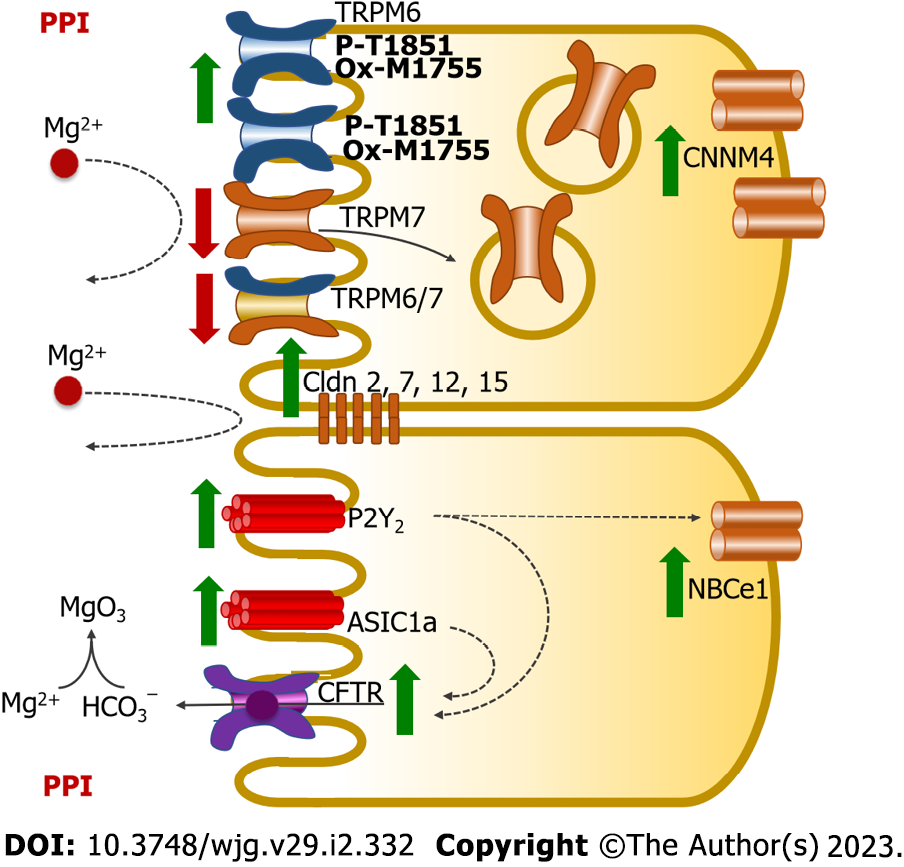Copyright
©The Author(s) 2023.
World J Gastroenterol. Jan 14, 2023; 29(2): 332-342
Published online Jan 14, 2023. doi: 10.3748/wjg.v29.i2.332
Published online Jan 14, 2023. doi: 10.3748/wjg.v29.i2.332
Figure 6 Mechanism of proton pump inhibitor-suppressed small intestinal magnesium absorption in proton pump inhibitor-induced hypomagnesemia rats.
Proton pump inhibitor (PPI) suppresses membrane transient receptor potential melastatin 7 homodimer channel (TRPM7) and transient receptor potential melastatin 6/7 homodimer channel (TRPM6/7) expression but increases membrane transient receptor potential melastatin 6 homodimer channel (TRPM6) and cystathionine β-synthase domain divalent metal cation transport mediator 4 (CNNM4) expression. PPI induces phosphorylation of the T1851 residue and oxidation of the M1755 residue of the membrane TRPM6 channel, which reduces their channel permeability. These PPI effects reduce transcellular magnesium (Mg2+) absorption. Overexpression of claudin 2 (Cldn2), claudin 7 (Cldn7), claudin 12 (Cldn12), and claudin 15 (Cldn15) reduces paracellular permeability, which suppresses paracellular Mg2+ absorption. PPI also enhances P2Y2- and acid-sensing ion-channel 1a (ASIC1a)-suppressed intestinal Mg2+ absorption. CFTR: Cystic fibrosis transmembrane conductance regulator; HCO3−: Bicarbonate; NBCe1: Na+-HCO3− cotransporter-1.
- Citation: Chamniansawat S, Suksridechacin N, Thongon N. Current opinion on the regulation of small intestinal magnesium absorption. World J Gastroenterol 2023; 29(2): 332-342
- URL: https://www.wjgnet.com/1007-9327/full/v29/i2/332.htm
- DOI: https://dx.doi.org/10.3748/wjg.v29.i2.332









